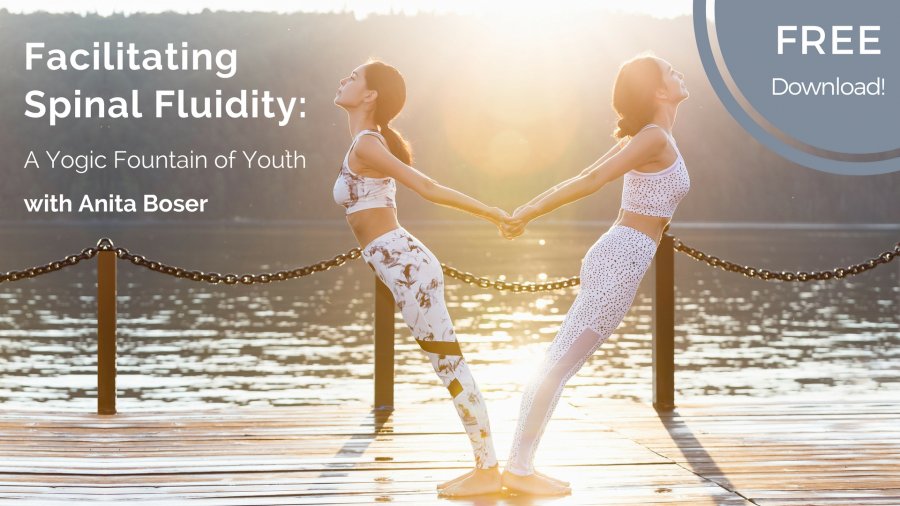Free Download! Facilitating Spinal Fluidity: A Yogic Fountain of Youth
Course Info
- Price:
- $0.00
Anita Boser
 Alignment is Anita’s profession, both in her practice as a Hellerwork Structural Integrator and as a yoga teacher. She believes that alignment is more than good posture; she has found it to be a path to greater awareness, self-discovery, healing, and profound living. For years Anita thought that...
Alignment is Anita’s profession, both in her practice as a Hellerwork Structural Integrator and as a yoga teacher. She believes that alignment is more than good posture; she has found it to be a path to greater awareness, self-discovery, healing, and profound living. For years Anita thought that... 
As children, we love to wiggle, dance and move with unselfconscious abandon. Sadly, once we hit school age our movements become much more repetitive and our bodies lose flexibility and become gradually more and more rigid as a result. So says Anita Boser, Hellerwork Practitioner and Yoga teacher, whose clients include people who live with a variety of chronic pain conditions such as Fibromyalgia, Scoliosis, and Arthritis.
In this interview, Anita describes how making space in our lives for subtle, fluid, and less structured movements can increase flexibility and release tension in a way that stretching doesn’t. The idea is to reintroduce fluid, untethered movement to regain freedom and body awareness.
Within the body resides a wealth of knowledge and wisdom if we learn to pay attention to it, she explains. Allowing the body to move in intuitive and non-linear ways is one way to access that wisdom. This technique, which Anita refers to as undulation, helped her to overcome chronic pain in her own body. She now shares it with her clients and students as a way to relieve pain, break habitual patterns, and tap into their own healing potential.
“One of the things about subtle movement is that learning to pay attention to slow and small-subtle movement helps us gain that wisdom where if we’re just living in our heads, we don’t even know it’s happening,” she says. “Our upbringing, unfortunately, teaches us to ignore our bodies, starting when we’re in kindergarten. You go to school and you want to run around and wiggle and the teacher says, “Sit still, we all need to be doing this together. The older we get, the less variety we have on our movement, the more we tend to get stuck in a rut.”
Eventually, we adopt habitual patterns for everything from sitting at the computer to driving the car, to reading the kids a story. Our bodies settle into physical routines and adopt to stillness. Even when we do eke out time to exercise, we tend toward the same repetitive patterns. Connective tissue starts to adapt itself to how we use the body and repetition tends to encourage more repetition.
While yoga practice is an effective way to open up the movements of the body, we can also fall into a rut in the way we move into and out of poses. Making space for fluid, non-repetitive movement, both on and off the mat, refreshes the body and counters the repetition. Movements can be big and flowy or small and subtle, but the bottom line is that by breaking patterns, we unleash movement potential and allow the body’s wisdom to flourish.
To get a taste of how this fluid movement can feel. Anita takes us through one exercise we can do sitting at our desks. And she reminds us again of those carefree movements of childhood.
“If you think about when you were four years old, you could do anything you wanted. You didn’t complain. You just had a good time, and your spine was very flexible. You didn’t get caught up or have stiffness or rigidity. You were very fluid and supple. And then as we get older… Do we get older just because of age? Or are we getting older because of that rigidity we build into our lives?”
If you are interested in learning how to bring more fluid movement into your life and your teaching practice, be sure to also check out Anita’s course on YogaUOnline: Youthful Spine, Youthful Body - The Role of Fluidity in Healthy Aging